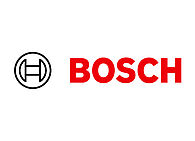Clutch

The clutch is a separate connection in the transmission, linking the engine to the gearbox. It thus enables starting away from rest and changing gear. The clutch is operated via the clutch...
Function
The clutch is a separate connection in the transmission, linking the engine to the gearbox. It thus enables starting away from rest and changing gear.
The clutch is operated via the clutch pedal and the clutch release system. When the clutch is not in operation, the disc spring in the clutch automatically presses the clutch disc against the flywheel via the pressure plate. This establishes a positive connection, allowing the engine torque to be transmitted to the gearbox.
When the driver of the car activates the clutch release system via the clutch pedal, the pressure plate is pulled away from clutch plate against the spring force. The positive connection is broken and no engine torque is transmitted to the gearbox.
Types of clutches
As the clutch disc wears, the force which must be applied to the pedal to operate the clutch increases. It is for this reason that SACs (Self-Adjusting Clutches) are fitted to modern passenger vehicles. Automatic wear adjustment in the clutch pressure plate ensures that pedal forces remain constant throughout the service life of the clutch.
The dual clutch is another type of clutch. It combines two multi-plate clutches in an oil bath or two dry single-plate clutches in a single module. Dual clutches are installed in dual-clutch gearboxes, with one clutch being used for the even gears and the other for the odd gears. This allows gears to be changed quickly without interruption of the tractive torque.
Safety
Constantly increasing levels of traffic on our roads mean that the requirements to be met by a clutch are getting more and more stringent all the time. Drivers want a clutch that is convenient to use and thus safe at all times of the year, regardless of temperature or weather conditions. Short traffic light phases, parking manoeuvres, driving off uphill and the increasingly more common stop-and-go traffic are demanding a clutch system that is safe and easy to use for safe dosing or interruption of flux at all times.
With both twin-clutch gearboxes and other automatic transmissions, no manual interventions are required to change gear. The gears are changed automatically at the correct time. As a result, drivers are able to focus their attention and enjoy more comfort whilst on the move.
Depreciation
The service life of a clutch is impaired by
- driving off at high speeds
- prolonged starting whilst slipping the clutch.
When stationary for long periods in queueing traffic, drivers should take their foot off the clutch pedal to avoid placing unnecessary load on the clutch release system.
With twin-clutch gearboxes and other automatic transmissions, electro-hydraulic clutch operation ensures that incorrect operation by the driver and thus unnecessary wear are avoided.
To maximise the service life of the clutch system, the hydraulic fluid for the clutch release system should be changed at the intervals prescribed by the vehicle manufacturer.
Environmental protection
Today's clutch linings are manufactured from environmentally-friendly asbestos-free materials. The remaining parts of the clutch system are primarily made from metal; at the end of the system's service life they are recycled and put back into the material cycle. This saves resources and protects the environment. The hydraulic fluid necessary for maintenance work can be recycled and used again after the end of the process.
Downloads
Here you can find all available downloads for the topic "Clutch":
All file downloads:











